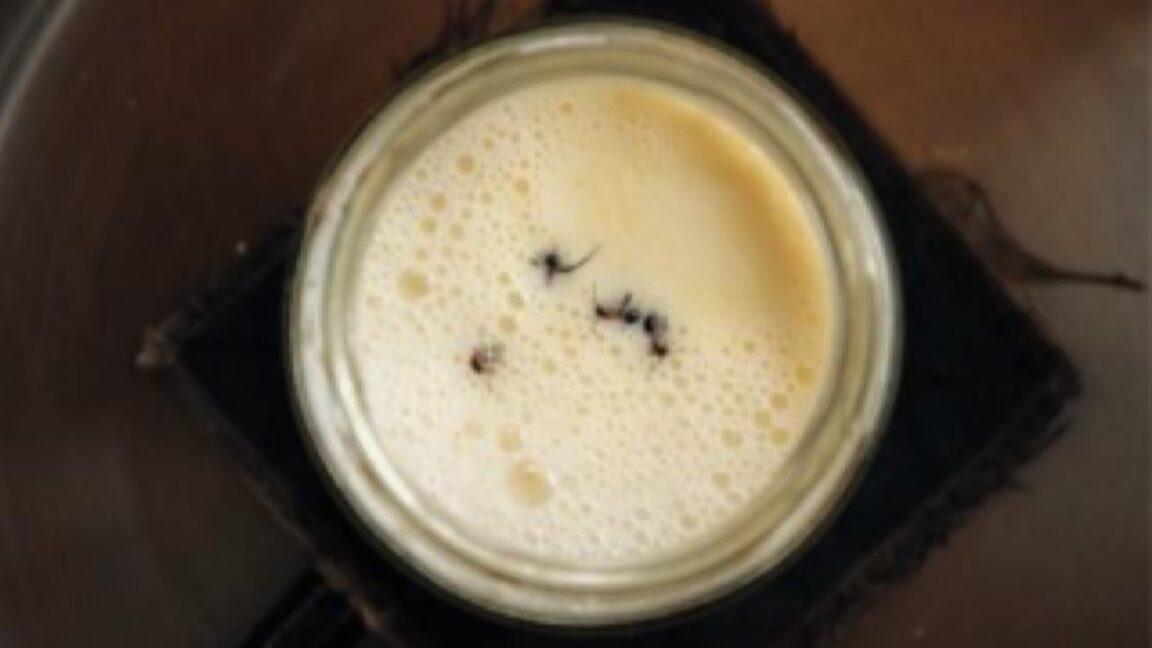Science
Scientists Uncover Benefits of Ants in Traditional Bulgarian Yogurt

Researchers have revived a traditional Bulgarian method of yogurt production that involves using ants to enhance fermentation. This age-old practice, particularly found in the forests of Bulgaria, has been validated by a recent study published in the journal iScience. The study explores not only the science behind this unique fermentation technique but also its culinary applications in modern gastronomy.
The traditional process begins with adding live red wood ants or crushed ant eggs to warm milk. According to co-author Leonie Jahn from the Technical University of Denmark, this method contrasts sharply with contemporary yogurt production, which typically relies on just two bacterial strains. She emphasizes the “greater biodiversity” present in traditional methods, which contributes to the variety of flavors and textures in yogurt.
To recreate the ancient recipe, researchers traveled to Nova Mahala, Bulgaria, where local knowledge still thrives. Utilizing instructions from co-author Sevgi Mutlu Sirakova‘s uncle, the team used fresh raw cow milk, which was heated until scalding, described as hot enough to “bite your pinkie finger.” They then added four live red wood ants collected from a nearby colony.
The fermentation process involved burying the milk container within the ant colony, taking advantage of the natural heat produced by the ants’ nest, which serves as an incubator. After 26 hours, the researchers retrieved the container, observing that the milk had thickened and soured. Tasters described the resulting yogurt as “slightly tangy” with “herbaceous” notes and the flavor of “grass-fed fat.”
To further investigate, the researchers conducted laboratory experiments in Denmark using local worker ants. They tested three versions of yogurt under sterile conditions, employing live, frozen, and dehydrated ants. By extracting DNA from both the ants and the yogurt, they identified the microbial communities present. Notably, the ants contained both lactic acid and acetic acid bacteria, which play critical roles in coagulating the milk. The study revealed that only live ants generated the desired microbial balance.
The revival of this ancient recipe raises questions about contemporary culinary practices. To explore this, the researchers collaborated with the renowned two-Michelin-star restaurant Alchemist in Copenhagen. The chefs transformed the basic ant yogurt into innovative dishes, including an “ant-wich,” an ice cream sandwich made with ant yogurt ice cream, and an “ant cheese,” similar to mascarpone.
In addition, they created a cocktail clarified with ant milk wash, a modern take on the traditional Milk Punch. The culinary team ensured that the ant body parts were removed, making the dishes more palatable for modern diners.
While the findings may intrigue food enthusiasts, the authors caution against homemade ant yogurt. They warn that ants can carry parasites that pose health risks. “We advise against the general application of this fermentation unless practitioners are knowledgeable in food safety or maintain this as part of their cultural heritage,” they stated.
Despite the potential health concerns, the use of ants in culinary practices is not unprecedented. In various cultures, insects are viewed as delicacies. For example, indigenous Brazilian people have consumed Ica leafcutter ants for centuries, often referred to as “Brazilian caviar.”
This research not only highlights the rich cultural heritage of yogurt-making but also opens the door for innovative culinary explorations that challenge conventional food boundaries. The interplay of tradition and modern gastronomy continues to inspire chefs and researchers alike.
-

 World3 months ago
World3 months agoScientists Unearth Ancient Antarctic Ice to Unlock Climate Secrets
-

 Entertainment3 months ago
Entertainment3 months agoTrump and McCormick to Announce $70 Billion Energy Investments
-

 Science3 months ago
Science3 months agoFour Astronauts Return to Earth After International Space Station Mission
-

 Lifestyle3 months ago
Lifestyle3 months agoTransLink Launches Food Truck Program to Boost Revenue in Vancouver
-

 Technology2 months ago
Technology2 months agoApple Notes Enhances Functionality with Markdown Support in macOS 26
-

 Top Stories7 days ago
Top Stories7 days agoUrgent Update: Fatal Crash on Highway 99 Claims Life of Pitt Meadows Man
-

 Sports3 months ago
Sports3 months agoSearch Underway for Missing Hunter Amid Hokkaido Bear Emergency
-

 Politics2 months ago
Politics2 months agoUkrainian Tennis Star Elina Svitolina Faces Death Threats Online
-

 Technology3 months ago
Technology3 months agoFrosthaven Launches Early Access on July 31, 2025
-

 Politics3 months ago
Politics3 months agoCarney Engages First Nations Leaders at Development Law Summit
-

 Entertainment3 months ago
Entertainment3 months agoCalgary Theatre Troupe Revives Magic at Winnipeg Fringe Festival
-

 Politics1 week ago
Politics1 week agoShutdown Reflects Democratic Struggles Amid Economic Concerns











